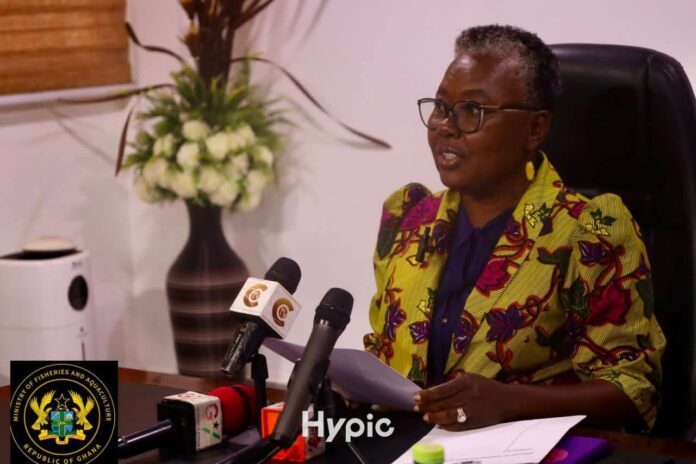The Minister for Fisheries and Aquaculture , Hon. Emelia Arthur, has announced that Cabinet has approved the establishment of Ghana’s first-ever Marine Protected Area (MPA) within the Greater Cape Three Points Area in the Western Region.
Addressing a press conference in Accra on Monday, October 20, 2025, Hon. Arthur described the move as a landmark national milestone in Ghana’s efforts toward sustainable marine resource management, biodiversity protection, and safeguarding the livelihoods of coastal communities that depend on fisheries for food and income.
She disclosed that Cabinet granted approval for the MPA on October 7, 2025, marking a new chapter in the country’s commitment to responsible stewardship of marine resources. “This decision reinforces government’s dedication to protecting our ocean ecosystem while ensuring that our coastal communities continue to thrive,” the Minister said.

Hon. Arthur noted that Ghana’s domestic fish production has significantly declined in recent years, forcing the country to import over 79,000 metric tons of fish annually to meet local demand. She cautioned that if current trends persist, the depletion of marine resources could further threaten livelihoods and food security in coastal areas.
She highlighted that, despite government interventions such as the Fisheries Act, 2002 (Act 625), the National Co-Management Policy (2020), and various Marine Fisheries Management Plans, scientific assessments reveal that existing measures have not been sufficient to reverse the decline of key fish stocks, particularly small pelagic species.
The Minister explained that while Ghana’s fisheries management has traditionally relied on non-spatial tools like seasonal closures and gear restrictions, the government is now shifting towards spatial management approaches, including the establishment of MPAs.
According to her, the introduction of the MPA aligns with international best practices and aims to support fish stock recovery, ecosystem resilience, and sustainable fisheries development.
Hon. Arthur further outlined the roadmap for implementing the MPA, emphasizing stakeholder engagement, scientific monitoring, and community involvement as central pillars of the process.
She therefore called on all stakeholders to collaborate with Government to ensure the successful implementation of this transformative initiative.








